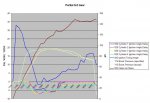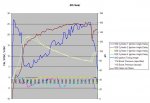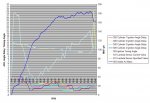GolfRS
Banned
- Location
- Europe-Greece
Chris, i've always thought adaptation itself if the effort made by the ECU to reach a new equilibrium (meaning zero STFT and LTFT ), after having been reset, or when any of the hardware has changed.
A fuel trim that stays above zero, kinda defeats the above procedure.No ?
Are there stock cars with stock software that log a positive (or negative) trim value after adaptation has ended?And if so, what is the reason for that.
P.S.Somehow i've seen my car change trims all the time.Thats both STFT and LTFT.It usually reaches 4 to 5%....
A fuel trim that stays above zero, kinda defeats the above procedure.No ?
Are there stock cars with stock software that log a positive (or negative) trim value after adaptation has ended?And if so, what is the reason for that.
P.S.Somehow i've seen my car change trims all the time.Thats both STFT and LTFT.It usually reaches 4 to 5%....



